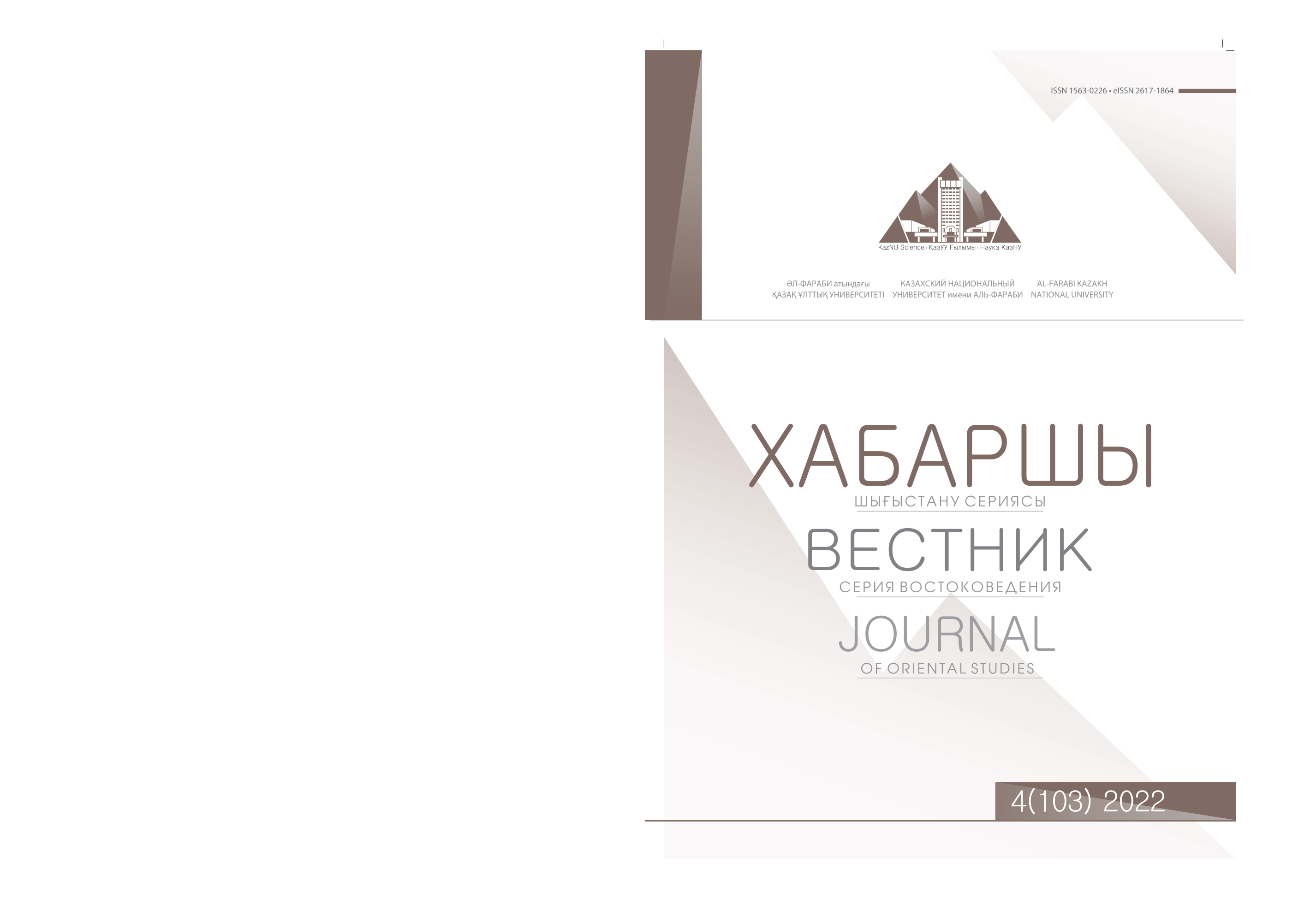Spelling and phonetic features of the medical treatise "Dastur al-'ilaj"
DOI:
https://doi.org/10.26577/JOS.2022.v103.i4.01Abstract
If we recall the historical development of the Turkic languages in the Middle Ages, in the Central Asian region since the Karakhanid period, in many studies we see works written in the Turkic language, based on the Arabic alphabet, called the Chagatai language. In this article, having studied the linguistic, spelling and phonetic features of the handwritten text of the treatise "Dastur al-ilaj", we consider it a work in the Chagatai language, called the Eastern Turkic or medieval literary Turkic language. Manuscripts written in the XV-XX centuries. in Chagatai differ in language structure, period of writing and content. In our opinion, medical works that develop the potential of the Turkic language as a scientific language should be considered from the point of view of Turkological and linguistic studies. The Persian versions of the work say that the treatise was completed in 1527 by order of the nomadic Uzbek Khan Abu Sagid Khan. Therefore, according to the classification of J. Ekman, the date of writing this treatise refers to the period after the classical era of the Eastern Turkic language. Based on the treatise “Dastur al-‘ilaj”, the article examines the linguistic features of medical works of the 16th century.
Thus, in the original text, an analysis was made of the phonetic features of nouns, the phonetic features of the names of plants, animals, body parts and internal organs of a person, as well as the spelling of borrowed words.
Key words: comparative phonetics, medieval Turkic language, spelling peculiarities, Turkic studies, original text.




